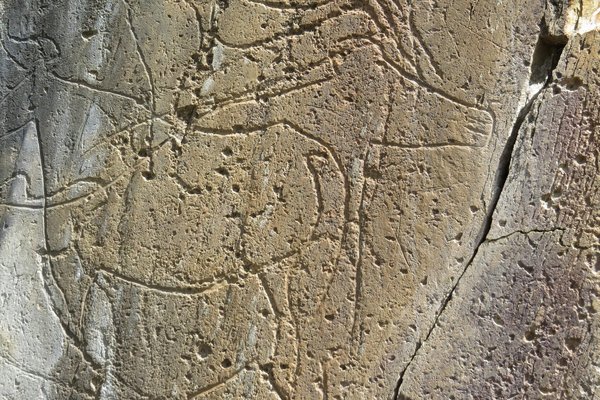Portugal, Spain
Coa Valley and Siega Verde
The Prehistoric Rock Art Sites in the Côa Valley and Siega Verde are representations of Palaeolithic art and the life of our early ancestors.
The rock engravings were made on cliffs in the open air along the Côa and Águeda river valleys. They depict mainly animals. The oldest engravings date from the Upper Palaeolithic (22,000-10,000 BCE).
Community Perspective: Go in the cooler months as it can get hot out there. Some of the Portuguese and Spanish components can be reached via official guided tours, and good explanations are provided on those. The engravings are “hard to appreciate without a magnifying glass and good sunlight.”
Site Info
Official Information
- Full Name
- Prehistoric Rock-Art Sites in the Coa Valley and Siega Verde (ID: 866)
- Status
-
Inscribed 1998
Site history
History of Coa Valley and Siega Verde
- 2010: Name change
- From Coa Valley into "Prehistoric Rock-Art Sites in the Côa Valley and Siega Verde" after extension
- 2010: Extended
- To include Palaeolithic Rock Art Ensemble in Siega Verde
- 1998: Inscribed
- Inscribed
- Type
- Cultural
- Criteria
- i
- iii
Links
- UNESCO
- whc.unesco.org
- Official
-
- siegaverde.es — Siega Verde
- arte-coa.pt — Côa Valley
- Related
-
- duncancaldwell.com — Prehistoric Art Emergency (1995)
- manorhouses.com — World Heritage Sites in Portugal
All Links
UNESCO.org
- whc.unesco.org — whc.unesco.org/
Official Website
- siegaverde.es — Siega Verde
- arte-coa.pt — Côa Valley
Related Resources
- duncancaldwell.com — Prehistoric Art Emergency (1995)
- manorhouses.com — World Heritage Sites in Portugal
News Article
- Nov. 16, 2022 rewildingeurope.com — Archaeological find in Greater Côa Valley throws spotlight on human-wildlife coexistence
Community Information
- Community Category
- Archaeological site: Rock Art
Travel Information
Reservation required
Recent Connections
-
Named after a River
Coa -
Reservation required
The guided tours, both on the Spanish a… -
Guided Tour Only
Connections of Coa Valley and Siega Verde
- Trivia
-
-
On Passports
Coa Valley on Portuguese passportSee www.pep.pt
-
Depicted in Mizielinska Maps
Carving of deer (Portugal)See i.pinimg.com
-
- History
- Ecology
-
-
Aurochs
Canada do Inferno, Ribiera do Piscos and Siega Verde all contain re[presentations of Aurochs
-
- World Heritage Process
-
-
Perfect Inscriptions
1998 -
Serial Transnational Sites
-
Extended
2010: To include Palaeolithic Rock Art Ensemble in Siega Verde -
Country gained extra WHS by an extension
Originally Coa Valley (Portugal); 2010 Spain
-
- Human Activity
- Constructions
-
-
Purpose Built Visitor Centre
Museum of Art and Archaeology of the Côa Valley (2009), within Archaeological Park (possibly in Buffer Zone of the WHS)
-
- WHS on Other Lists
-
-
World Monuments Watch (past)
Coa Valley Petroglyphs, Vila Nova de Foz Coa (1996) -
Rewilding Europe Network
Coa Valley
-
- Timeline
-
-
Late Pleistocene
22,000-10,000 BC
-
- WHS Hotspots
- Science and Technology
-
-
Recently discovered
Late 1980s (only known to scientists from early 1990s)
-
- Visiting conditions
-
-
Reservation required
The guided tours, both on the Spanish and Portuguese side, need a reservation well beforehand. They're also not conducted daily. -
Guided Tour Only
-
- WHS Names
News
- rewildingeurope.com 11/16/2022
- Archaeological find in Greater Côa…
Recent Visitors
Visitors of Coa Valley and Siega Verde
- Adolfo
- Alberto Rodriguez Gutierrez
- Alexander Lehmann
- alicemears
- Ana Lozano
- Anna Wludarska
- Antonio J.
- Argo
- Atila Ege
- Bin
- Can SARICA
- Cheryl
- Christravelblog
- Claire Bradshaw
- Clyde
- Corinne Vail
- CugelVance
- Cyberczar
- Daniela Hohmann
- Dan Pettigrew
- David Berlanda
- DavidS
- debatecoach
- Dimitar Krastev
- Dorejd
- Dr. Caligari
- Dwight Zehuan Xiao
- Elia Vettorato
- Els Slots
- Emilia
- Errol Neo
- Fan Yibo
- Farinelli
- Femke Roos
- Fernweh
- Filip Murlak
- Frédéric M
- Frederik Dawson
- FS
- Hubert
- Iain Jackson
- Ivan Rucek
- Jakob F.
- Janina Lehmann
- Jarek Pokrzywnicki
- Jasam
- Jeanne OGrady
- Jens
- Jezza
- João Aender
- Joel on the Road
- Jonas Kremer
- Jonas Martinsson
- KarenBMoore
- Kurt Lauer
- Lara Adler
- Little Lauren Travels
- Loic Pedras
- Luboang
- Luis Filipe Gaspar
- Lukasz Palczewski
- Maciej Gil
- Martina Rúčková
- Mathijs
- Michael Novins
- Mikan22
- Mikko
- Naim Y
- nan
- Nihal Ege
- Nolan B.
- PabloNorte
- Patrik
- Paul Schofield
- Petteri
- Philipp Leu
- Philipp Peterer
- Ralf Regele
- Randi Thomsen
- Reza
- Roger Ourset
- Roman Bruehwiler
- Sabrina Liebehentschel
- Samy G
- Shandos Cleaver
- sibariam
- Solivagant
- Stanislaw Warwas
- Stijn
- Svein Elias
- Szucs Tamas
- Tamara Ratz
- Taotao Chen
- Tarquinio_Superbo
- Thomas Buechler
- Thomas Harold Watson
- Thomas van der Walt
- Thorben
- Tim Allen
- Traveling Girl
- usagi1974
- Walter
- Wieland
- Wojciech Fedoruk
- Zoë Sheng
- Zos M
Community Reviews
Show full reviews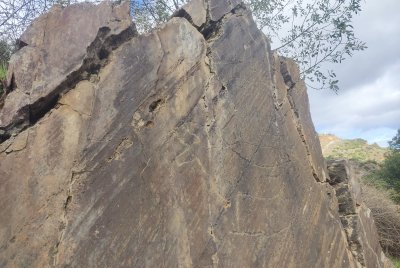
I visited the village of Vila Nova de Foz Coa on oct.,the 19th and 20th,2024.
I had booked a tour "Canada do Inferno" through the official website of Coa Parque weeks before for sunday morning, october the 20th. On the 19th I arrived at Pocinho by train and by pure luck I got a taxi to my accommodation.
Before I took the taxi, I had visited the dam and the closed (but nevertheless accessible) former train and car bridge of Pocinho. Highly recommended, especially since it only takes a short stroll to get from the train station in Pocinho to both places.
At around 10.00 on sunday I joined a group of 6 people (all from the USA or Canada). The tour started in a 4x4 jeep with 8 seats+1 driver (Daniela,our competent guide,herself drove the car). After several km in car we went on foot. The final section is a narrow but well-maintained track on foot stretching some 400 meters until the first engraved outcrops shown to the public.
Daniela, our guide, was full of passion and explained everything in an interesting and exciting way. Our group was well informed, asked some damn good questions and was very open-minded. A perfect 2.5 hour tour with a classy guide that flew by. The drawings were clearly visible because the angle of the sun was perfect at that moment. I was very satisfied with both the tour and the museum. Without our website worldheritagesite.org I would never …
Keep reading 0 comments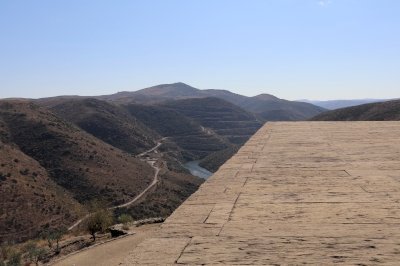
October 2020 - This was the most disappointing Whs on our trip, certainly by own fault. We have not arranged anything, since we spent the 2 days before arriving here in the Serra de Estrella, without recharging mobiles. We arrived at the museum, which is where most tourist stop only and visited the exposition. No guided tours were available for that day, next day only afternoon. We had seen Rock carvings before e.g Valcamonica, and they do not belong to my favorites anyway. We drove down to the Coa and could have a closer look on the most northern core Zone. For my standards that’s is enough of an visit to check this site. Please don‘t blame me. I will leave no rating since I cannot evaluate the essence of the OUV. Our schedule was tight, so we continued to Pinhao still that day.
Keep reading 0 comments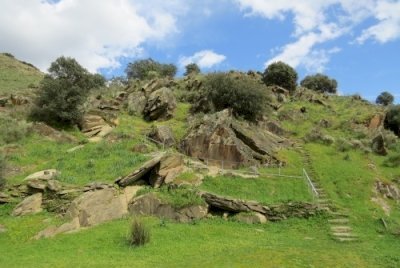
I almost failed twice in visiting the Coa Valley Rock Art WHS. In 2002 I was all set to go with a confirmed tour booking, the only way to get into the WHS core zone, when I received an e-mail a few days beforehand that the site had been flooded. All visits were cancelled. On my next try, in March 2016, I enquired about a tour a week before and was told that those on Saturday were fully booked! The PAVC gave me a list of private tour companies that also arrange visits (at a considerable cost I am afraid). Fortunately, I was able to change it to Sunday, and they had spaces left for that day. Phew. I could not imagine having to travel to this corner of Portugal for a third time just to see one left-over WHS!
In hindsight this one-day delay proved to be a blessing during the Easter weekend: Sunday was the only bright day between two days full of rain. So I drove happily for 2.5 hours to this far corner of Portugal, once again passing the Alto Douro WHS which I had already ‘ticked off’ in 2002. I had planned a couple of stops to improve the photos of that WHS on the website, but there’s hardly anywhere to stop along the way.
I arrived at the Côa Museum at about noon. One wonders what lay behind the decision to build such a huge modernist structure for what probably always will …
Keep reading 0 comments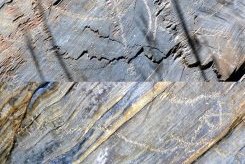
As some of the previous reviewers have commented, the Coa Valley Rock carvings are situated at the end of some pretty winding Portuguese roads. The extension in 2010 to include a Spanish location at Siega Verde gave us the chance to fit in a visit rather more easily, with only a relatively short diversion off the natural route we were taking anyway between Salamanca and Caceres. Despite that, I note that no one else has reviewed this extension yet. As usual we tried to make use of all available information when planning our visit – but, as often happened in Spain, the available arrangements were not entirely as advertised!
Siega Verde is situated a few kms north of Cuidad Rodrigo on the main Salamanca – Portugal highway (A62). A prompt start from our Salamanca hotel meant that we were at the visitor centre a bit before 10 am when it was due to open, having covered the 100kms in under an hour. If you are planning to visit then check the “Horario and Tarifas” page of the Web site (http://www.siegaverde.es/index.php/horario-y-tarifas ) very carefully as the number and timing of visits varies by week and day and, outside August, they tend only to be available around week ends. The “macro-plan” for our trip had targeted Friday and the calendar on that Web page clearly showed a trip at 11 am for our Friday in Sept 2015. Unless earlier telephone or web bookings had filled it up we could expect to be …
Keep reading 0 comments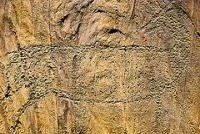
I visited this WHS in August 2014. It's the first WHS I visited while in Portugal and it was quite an achievement to get there by car. The winding roads are in very good condition and the Coa Museum is a modern structure perched high up above the valley. There are enough parking spaces even for the summer months as I don't think it is ever packed with tourists. Having visited the rock drawings of Alta in Norway and the ones in Valcamonica in Italy, I thought that this transnational WHS was their equivalent. Well, I'm afraid to say that it definitely wasn't. I'm still happy that this WHS made it on the list if this meant preventing an industrial plant or a useless dam being built instead. The landscape is gorgeous and it's a beautiful continuation of the Alto Douro WHS. The engravings of the Coa Valley are extremely fragile and most of them are very small and hard to appreciate without a magnifying glass and good sunlight. Some examples were on display inside the Coa Museum and even with a magnifying glass and good lighting it was difficult to appreciate them. I went on a morning 4x4 tour to the sites of Penascosa and Canada do Inferno and did a long hike to the Vale de Cabrões site to see the deer engravings on Rock 1 which turned out to be the most visible engraving of my visit (picture). Perhaps filling them in with red ocre (like they …
Keep reading 0 comments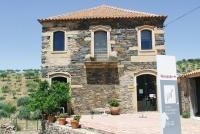
The rock engravings are difficult to see and nowhere near as stunning as those of Alta (Norway) or Tanum (Sweden).
However having reached Pocinho by train, it was only a short ride by minibus to Vila Nova de Foz Coa. Here I visited the Archaeology Park office and manged to arrange a visit to the Penascosa site. This involved taking the same minibus to Castelo Melhor, a village about 10 km away. From the reception centre in the village I joined a guided tour (costing 7 euros) by 4WD down into the valley to see a number of the engravings.
Keep reading 0 comments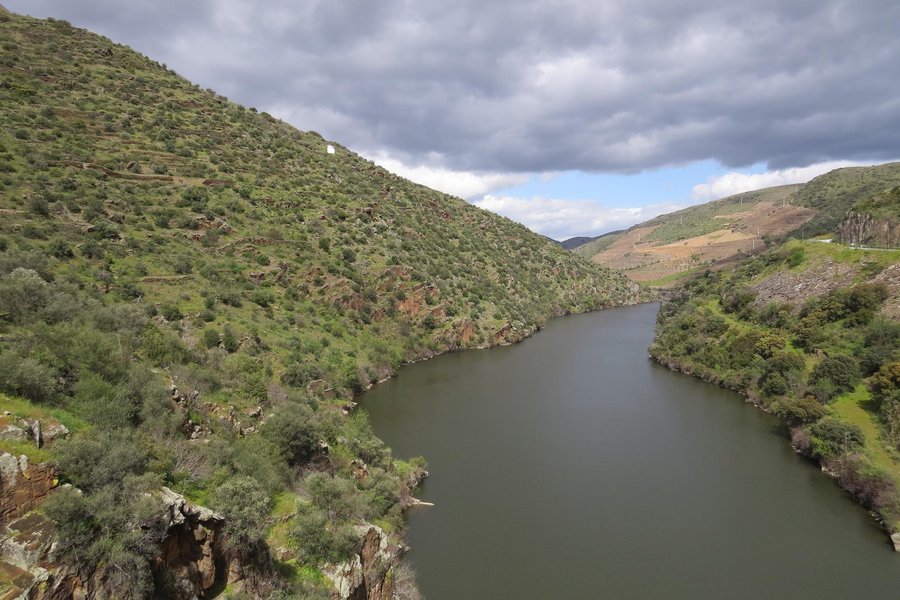
Coa river is an affluent of the Douro river and so, a visit to the Coa Valley is obviously easy to achieve for any visitor that arrives in Oporto. For those who like beautiful landscapes is a place that will be for sure a good destination. As happens with some places in Spain (Seville, Toledo, Cordoba, etc.) the visitors are acknowledged to avoid months of severe temperatures (July and August).
Keep reading 0 comments
This place is a find if there ever was one - go, World Heritage conoisseurs, before mainstream tourists find out about it!
The rock drawings open to the public are split up into three areas, which you have to book separate tours for. Each trip involves a very bumpy 4WD ride into the valley. Be on the lookout for the guards and their very friendly dogs (in fact, watch out for dogs anywhere in Portugal, from what I've seen)! The most popular site is Ribeiro de Piscos - it had the clearest drawings and was the least strenuous walk (for people concerned about such things). Canada do Inferno was the more challenging of the three, with the fewest drawings; although it was a beautiful scenic walk and my husband and I were the only ones on the tour, which made it worth the effort anyway. The tour guides were excellent and were very helpful in pointing out drawings that were at times very hard to see. They answered every question we had.
I would recommend going in the cooler months - we were there in early November and the weather was almost perfect (one day it rained, but literally just when our tour of Ribeiro de Piscos was finishing). The guides told me that because the Coa Valley is a microclimate (hence the profusion of olive groves and wineries) it gets extremely hot and dry in the summer. So much so, that tours of the drawings are only run in …
Keep reading 0 comments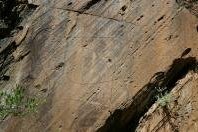
We visited the WHS of the rock drawings as part of our trip through northern Portugal. The drive up the Douro Valley is beatiful anyway but I wouldn't have gone that far if there was no WHS.
We had prearranged a tour with the park rangers and the Coa Valley turned out to be a beautiful and tranquil place. There were no tourists there whatsoever, good on one hand but whether the park will ever be able to economically justify itself, is doubtful.
I have to admit that a good bottle of vinho verde attracts me slightly more than most of the rockdrawings we finally saw. One really has to be an anthusiast of rock drawings to appreciate them as much as our guide did. At the site near Vila Nova de Fozcoa where we've been the rockdrawings are few, they are tiny and difficult to see without being pointet to them. The antelope which became the heraldic animal of the park was detected here. Its about 10cm in size and so delicate that noone wearing glasses will be able to spot it without help. The whole place didn't meet my expectation level of rockdrawings. Maybe the other 2 sites nearby would have shown more.
I don't regret having been there as it is a beautiful landscape, and if the rockdrawings were not detected a huge powerplant would be here today. The artwork itself hasn't converted me into a rockdrawings-maniac.
Keep reading 0 comments
